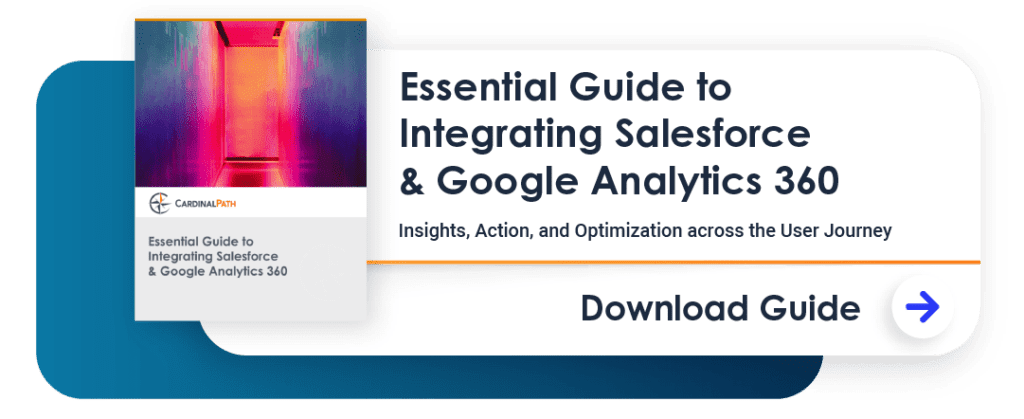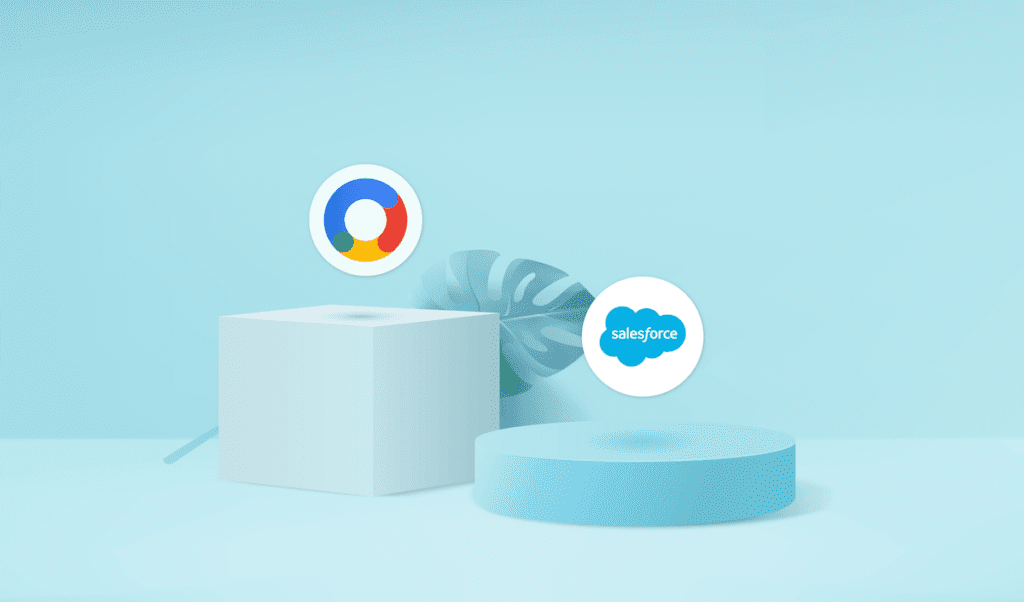Rapid growth – there are worse problems for a company to have. Still, when a large matrix organization goes public and starts expanding at neck breaking speeds, success is not without its challenges. Just ask Sanjay Gosain. He’s the Senior Manager of Digital Analytics Platform at Salesforce, a revolutionary cloud software company that started out in the Customer Relationship Management (CRM) space in 1999. The high velocity San Francisco-based company is driven by organic growth as well as the acquisition of many other different types of companies – all operating together under the Salesforce umbrella. Small problem though: the different business units weren’t so much operating “together” as they were operating in silos. That was one of the challenges facing Salesforce when Gosain’s team partnered up with Cardinal Path to help customize a fully integrated advertising and analytics stack.
“There were a few emerging needs at the start of this project that we needed to address,” explains Gosain. “The first was greater understanding of the user journey across properties and also across different marketing channels. The second need was to have smarter website and digital experiences….the third need was to optimize our growing marketing investment and to support a large distributed user base.”
How’d they approach such a huge undertaking? They turned to Google Marketing Platform’s suite of digital marketing solutions.
Download our Essential Guide to Integrating Salesforce & Google Analytics 360
Charting a Roadmap for Platform Adoption
Of course, working with the right tools is just one part of the equation. There’s a lot more planning and strategizing that goes into a tech stack. So let’s break it down: Salesforce needed to manage everything centrally but also needed to support the individual needs of different business units across the entire organization. With that in mind, Cardinal Path collaborated with Salesforce to develop and implement a scalable approach to marketing technology that balances central governance with flexibility for user groups.
Taking into account such a wide range of stakeholders, Cardinal Path outlined and executed a customized onboarding strategy that kicked off with a deep-dive exploration among the various teams from across the organization. They were encouraged to really think about their needs, and not just their marketing wish list. Through consultation, we asked stakeholders to consider their day-to-day business pains, what key objectives they needed to meet, but also how their role was shaping corporate growth, and how data insights could fuel their success over the long-term.
“We sometimes focus on short-term goals and getting executive buy-in”,says Gosain. “We sometimes lose track of shaping viewpoints and thinking of the longer term. It’s important to use this as an opportunity to also open up perspectives to what is possible. In some cases, you need to rethink what’s currently being done in the organization. In other cases, you could start the implementation at a more MVP [Minimum Viable Product] level, and then scale out as you get more experience with the platform.”
Once everyone had their business objectives clearly laid out, the next step was to understand the company’s ecosystem. These workstreams provided a clear view of how different teams depend on each other, what brings them together, what separates them and more importantly, the business can grow with better data-sharing. From there, we were able to develop clear recommendations and map out a way toward a truly integrated Google Marketing Platform (GMP) adoption.
Measuring Business Impact for Salesforce
As part of the transition strategy, Salesforce implemented a measurement framework in order to have a clear reference for metrics, values and definitions. This way, the Salesforce teams could streamline the process for managing users across the organization – even for people onboarding, offboarding or going through company migration. Creating this foundational reference allows Salesforce to measure and optimize areas of improvement with everyone “singing from the same songbook”.
“This is still early, but we’re seeing some benefits across the organization,” says Gosain. “The first one is around campaign analysis. We’re building on a number of areas here. As part of this use case, our paid media teams are building campaign dashboards using Salesforces’ own Datorama platform and this is bringing together traffic data from GA360 (Google Analytics 360), ad impressions and cost data from the platforms and then conversion data from our internal CRM implementation. And we’re building these integrated reporting views that help campaign managers understand the benefits and opportunities from the campaigns in relation to the investment and the advertising.”
Integrating Advanced Reporting & Analysis
As part of its stack, Salesforce has also partnered with Google and is using BigQuery’s machine learning (BQ ML) capabilities to develop clusters of users showing similar patterns of historic patterns. Those clusters are then imported back into GA360 to use for potentially targeting content tailored to their needs – regardless of where they are on the marketing spectrum. Messaging for users in the awareness phase, for example, differs from messaging for users in the decision phase. The analytics stack also empowers Salesforce to deploy and leverage richer integrations within its entire digital ecosystem – i.e. no more data silos.
Whether it’s gated content produced by one team or ungated content produced by another team, Salesforce is now able to better understand what kind of engagement all its campaigns are delivering and act accordingly. Another layer of enriched integration is with the analytics collected from Google advertising products and Google Search Console for SEO. Additionally, Salesforce is bringing in analytics to help inform the dashboards that its content strategists need to inform their efforts.
“We’re bringing in content metadata so there’s repositories, there’s data capture, there’s information on what audiences are meant for, what segments are used for – things like that,” says Gosain, adding, “We’re bringing in some metadata for attendees at our physical and virtual events. And lastly, we’re integrating with other tools that help provide deeper insights on experiences and how users are engaging in a more finetuned way with the content on our pages.”
Learning to Be Flexible
For large transformational projects like this one, you have to factor in the possibility of priorities shifting along the way. A lot can change in a year. 2020: case in point. So yes, it’s best to scope it out upfront but also set the expectation early on that you’re going to need to keep evaluating this project and rescoping throughout the journey.
“At Salesforce, we see the changes are constant – it’s a fast-moving organization, a fast-moving space as well,” says Gosain. “So you have to keep your options open in supporting a business that’s going to be evolving and conditions keep evolving … in some cases, [there are] changes that are outside of your control and totally unexpected.”
“So it’s best to think of some of these capabilities that you’re building as a product, not just a project,” he adds.
Conclusion
Salesforce’s solution was not meant to be final. It’s meant to be a foundational stack that will help them expand to future product development and support various needs including user targeting, product integrations and marketing activations. It’s helping them to understand their audiences and target them better. Google Marketing Platform adoption will continue to expand and to support not only org-wide objectives but also the various business units in the company.

Author
Tara is Director of Data Engineering on Cardinal Path's Data Science team. She focuses on advancing clients' capabilities by solving their challenges in data integration and transformation. With a deep background in consulting across a variety of verticals and platforms, Tara is often a heavily relied upon resource to bridge communication gaps and unlock technical barriers.
View all posts













